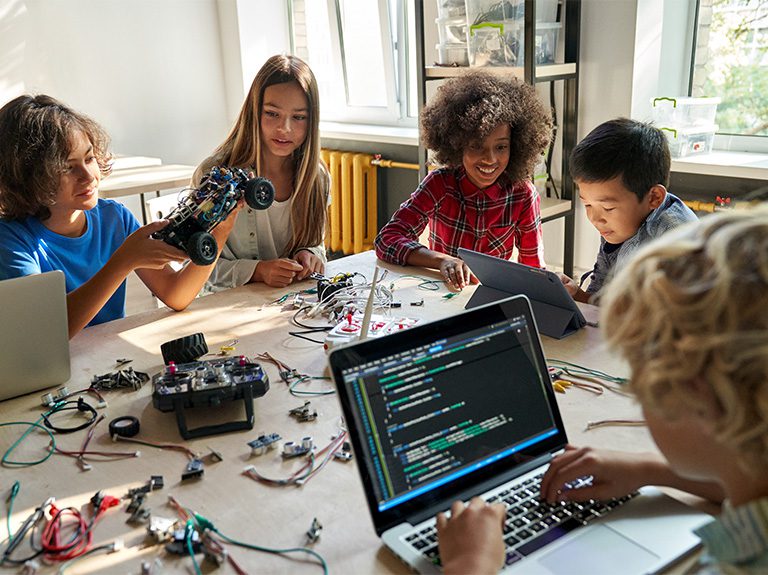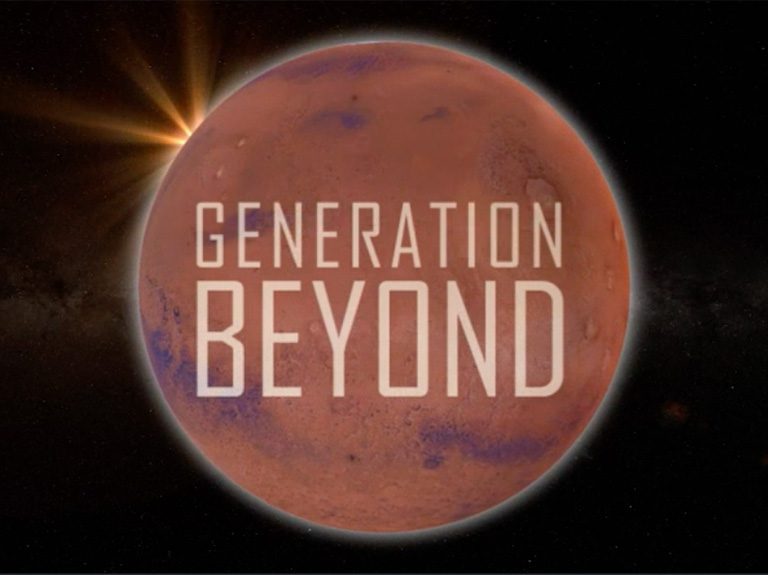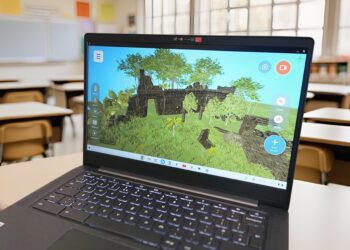Educators have an extraordinary opportunity to ignite a passion for learning by embracing the dynamic world of STEAM learning. Incorporating STEAM isn’t just about teaching science or math—it’s about nurturing a mindset of curiosity that empowers students to question, experiment, and grow.
The beginning of the school year is a great time to help students establish this mindset and begin building a culture of curiosity, creativity, and innovation in the classroom. Here are some ideas and advice from Tim Needles, a technology integration specialist, DEN STAR, and author of the book STEAM Power from ISTE, for weaving Science, Technology, Engineering, Art, and Mathematics into your classroom.
Sparking Student Interest
One of the easiest ways to get students excited about STEAM learning is through igniting their curiosity. Curiosity is an element found in professionals of every discipline! To inspire my students to think critically and creatively, I begin by modeling the behavior. I pose authentic questions about STEAM topics such as space, the future of architecture, and improving the environment, then lead students through finding resources with tools like Discovery Education to learn more about it. Showing students how to ask questions and find the answers can show them that the sky is the limit when you’re willing to search for information!
Between Discovery Education Experience and other resources, there are endless ways to find answers to your students’ questions. The key to inspiring creative thinking without overwhelming students is working as partners in the process to help find the best videos, articles, and other online resources. We explore the resources together and I find it helpful to give students multiple avenues to share so it’s not just one or two students raising their hand—we form groups so students can collaborate.
Creating Relevant, Fun Learning Opportunities
Another important part of a creative mindset is enjoying the process! We all remember having fun learning in the classroom as students, and a great way to introduce a fun learning activity to any level of students is through Virtual Field Trips. Some of my favorites are Living with Polar Bears in the Arctic, Generation Beyond: Mars Exploration, and STEAM Careers Take the Spotlight: Country Music’s Biggest Night. These let students have an experience together that is new and authentic, and it allows segues into all different kinds of conversations on STEAM ideas, careers, and innovations. The great thing about these Virtual Field Trips is that the students always enjoy them, and they are always a favorite, fun part of the learning.
It’s particularly useful to tie learning experiences into local and community issues to connect the learning into the students’ lives. I love blending Discovery Education resources together with creative projects that encourage students to think outside the box and serve as a formative assessment. Consider how you traditionally assess student learning and add options for students that move past question-and-answer style work. Encourage students to bring their work to life by creating a structure with cardboard or writing and producing short video poems.
Providing students with the opportunity to complete a project can help them grapple with problem-solving, making and moving past mistakes, and finding new ways to express their learning and opinions. When students learn about space exploration from the Generation Beyond: Mars Exploration Virtual Field Trip, ask them to create a cardboard structure depicting the surface of Mars, or ask students to produce a short video poem about life in the arctic after they learn about it through the Living with Polar Bears in the Arctic Virtual Field Trip. Extending learning experiences past the “new content” and into the application of knowledge through innovative projects can help students demonstrate what they’ve learned and think creatively throughout the process!
Implementing these ideas will help you open doors to innovation, creativity, and critical thinking for your students. You can see the joy on their faces as you embark on hands-on explorations and encourage collaboration with exciting projects through a multidisciplinary lens. This year, let the spirit of STEAM infuse your classroom with boundless enthusiasm, guiding your students towards a future where possibilities are endless, and their potential knows no limits.

Tim Needles
Tim Needles is an artist, educator, performer, and author of STEAM Power: Infusing Art Into Your STEM Curriculum. He is a TEDx Talk speaker, a technology integration specialist, and teaches art, film, and emerging media at Smithtown School District and Five Towns College. His work has been featured on NPR, in the New York Times, Columbus Museum of Art, Norman Rockwell Museum, Alexandria Museum of Art, Katonah Museum of Art, and Cape Cod Museum of Art.
He’s the recipient of ISTE’s Technology in Action Award and Creativity Award, NAEA’s Eastern Region Art Educator Award & ArtEdTech Outstanding Teaching Award, and The Rauschenberg Power of Art Award. He’s also a board member of NYSCATE and NYSATA, a DEN STAR, National Geographic Certified Teacher, Kami Hero, Formative Champion, PBS Digital Innovator, a NASA Solar System Ambassador, an ISTE Community leader, NAEA ArtEdTech interest Group chair, a teacher leader in the CAN Connected Arts Network PLC, and an Adobe Creative Educator Innovator. He’s active on social media at @timneedles.








